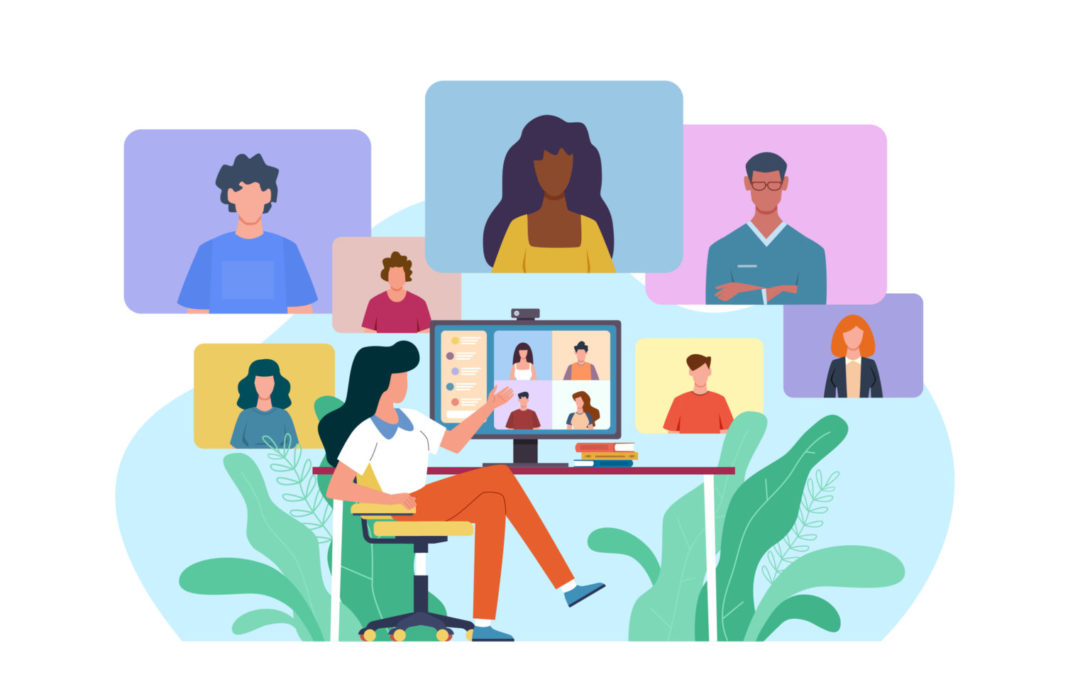
by Rene Street | Mar 30, 2023 | Blog, Uncategorized
There’s never a perfect time to pause your day-to-day work and focus on the internal team, but when you do make the effort, the dividends are immediate. Setting aside an hour, a half-day, a two-day retreat or anything you can manage as a team will provide the opportunity to gather together, grow as a team and refill your collective energy tank in order to bust out of service fatigue and return to delivering excellent customer service in every interaction.
Refill the Team’s Energy
Your first step to regaining the capacity to do your work at your fullest potential is to heighten self-awareness and lean into the responsibility that you must refill your tank. Just like a video game avatar who seizes every opportunity to grab more energy for their harrowing journey ahead, you also need to seek out and embrace the chance to replenish yourselves wherever you find it. The good news is there are easy, actionable ways to find and create more energy for yourself and your whole team. It starts with committing to a “Gather and Grow” mentality that brings a team together (virtually or in person) and facilitates the kind of growth that fills your team’s energy tank and returns your business to a thriving state in the marketplace.
This four-step G.R.O.W. process will show you exactly how.
G – Game On!
Gaming at work might not be an intuitive way to encourage your team to spend their time. But gaming on the job is an easy way to bring hearts and minds together in pursuit of your common professional goals. Friendly sales competitions, staff meetings with moments of levity, and experiential outings with your team are all impactful ways to bust out of service fatigue. To take your workplace gaming to the next level, consider uniting over a cooperative strategy that can break the boredom or monotony of a day. You can boost teamwork qualities through games that bring a team around a collective purpose and goal. These types of efforts are shown to reduce stress and help participants cope with work-related fatigue.
R – Rule Reminders
It seems every business needed to adjust rules, policies, and offerings over the last two years to accommodate the global crisis. Process procedures changed for everything from hotel housekeeping to checking out books from your local library! Frequent change without strong internal communication leads to trouble. Making time to “accuracy audit” will help your team find their footing again when it comes to customer instruction.
Conducting an accuracy audit is easier than it sounds, and it’s the perfect agenda for the next time the team gathers together. Does your website match the current offerings? Do all members of the team know the current rules, even if they only work a few hours a week? Is everyone clear on the current processes of your organization internally and externally? Francis Ford Coppola, the famous film director, was once asked what his secret to success is. He answered, “The first thing I do is make sure that everyone is set is making the same movie.” You are the director of your workplace set. Get all the characters on the same page.
O – Optimism
The dedication to sincerely working toward a better tomorrow is imperative for personal and professional growth. That’s not to say that finding the silver lining in every situation is easy. Far from it. However, when a crowd gathers, its members can feed off each other’s attitudes, mindsets, and perceptions, the good and bad vibes quickly dominoing from one person to the next. For example, observe any boat-rocker on staff who starts a rumor laced with a little over-the-top emotion and see how fast the fire spreads ill-will among the team. Disaster!
However, only you can prevent forest fires! Take the time to gather regularly (even if in a virtual format) and stay in positive communication to decrease the chance of an unnecessary negative spark. Strive to provide frequent updates, truthful status reports, and lead by example with your own optimistic attitude.
W – Warm Welcomes
The odds are good that when your team gathers the next time, there will be new faces on board. Don’t underestimate the power of a warm welcome. No one likes the feeling of being the “new kid in school” and your compassion and kindness (regardless of your position at the company) can go a long way to get new staff off to a great start with the team. Remember to share those unwritten rules everyone else knows about (like, “Use any coffee mug except the purple one with the smiley face. That’s Sandy’s and you all know not to touch it.”) Consider assigning a first-week buddy to each new team member to help shave the learning curve and make them feel at more at home.
Making the time to G.R.O.W. (group gaming, rules review, optimistic outlooks, and warm welcomes) will reboot the energy tank of your organization and make sure everyone is busting out of Service Fatigue with full power and a positive outlook.
About the Author, Laurie Guest
A Hall of Fame keynote speaker and author, Laurie Guest, CSP, CPAE, is an authority on customer service excellence. Laurie blends real-life examples and proven action steps for improvement. She is the author of two books and is writing a third on the topic of service fatigue. To learn more or connect with Laurie, visit www.LaurieGuest.com

by American Business Women's Association | Jan 26, 2023 | Blog, Uncategorized
Being on video and watching videos is today’s business norm. A recent survey showed 76% of consumers watched a video before purchasing a product. Social media influencers promote products through video-based storytelling. You login to video meetings daily with prospects and customers.
Since 2005, the year YouTube launched, video has increasingly grown in prevalence, production value, and consumption. Then in 2020 video marketing took a massive leap forward with the pandemic-induced use of video conferencing, podcasts (with video), and livestreams.
Today, YouTube is the most used social platform for research purposes among business-to-business decisions makers with 50.9% of users. And every day more than 300 million people participate in a Zoom meeting.
The reluctant say about video meetings, “It’s not going away.” Strategic leaders, though, say, “Video is how we do business now.”
In today’s business world all video is video content marketing. Zoom is not a phone call with video. Whether it’s a livestream or a self-produced YouTube short, your videos still need to follow a handful of rules.
Positioning
Some marketers consider the word brand to be a four-letter word. The job of marketers and business leaders, they say, is to position a company or product in the market.
The brand becomes how customers define it, and, hopefully, they define it based on your considerable efforts.
The best marketers see this work of positioning to be the first and most important activity. They have learned to be comfortable with discomfort, because good positioning feels limiting. Good positioning is uncomfortably narrow.
It’s a single, narrowly defined target buyer. Your videos—live and recorded—will improve once you know who you are producing them for and what their motivations are.
Differentiation
What makes you different is what gets people’s attention. Not different for different sake, but a viable, propositional difference which appeals to your ideal buyer.
It’s a noisy, messy, and chaotic market. You want to be a brand which means you can charge a premium. If there is nothing to distinguish yourself from the competition, then you’re a commodity and you can only compete on price.
Your differentiation needs to be relevant and clearly expressed on all your video channels, especially video meetings. The first step is to shift responsibility for video meetings from operations to marketing. The next step, especially with a hybrid workforce, is to make sure that everyone who shows up on video is well trained and that their presence represents the value of the brand.
Distribution
Where to post your videos is determined by positioning and differentiation, not trend or fashion. A fishing guide once said, “You’re not fishing unless you have fish under your boat.” Or as Maverick said to Goose in the first Top Gun, “Target rich environment.”
Distribution can include everything from the social media platform (LinkedIn, TikTok) to the video distributor (YouTube, Vimeo) to the livestream platform. It answers what and how of your video content strategy.
Regardless of platform, you want all your videos to do one thing: direct interested parties to your website. There they learn more about you and begin to fall in love with you.
Distribution isn’t a benign decision. It says a lot about who you are and the people you’re trying to reach.
Story
Stories draw prospects in and customers closer. A well-told story engages the right people into a deeper, more meaningful conversation.
The right story you want to tell elevates the customer as hero. It captures your positioning and differentiation. How you will tell your story—written, audible, or visual—will be determined by the platform you choose and the audience you want to reach.
Tiktok is both a genre of video and a distribution platform. The audience consumes video through a spontaneous scroll. How you tell your story on TikTok may not work on LinkedIn.
Additionally, your video meetings, podcasts, and livestream productions express the story of your brand. The way you show up on video tells a story. But is it the right story? Your video meetings and podcast presence need to set the tone and timbre of future engagements.
Surprise
Better video is an act of kindness. Do everything you can to be more present across the lens.
We all spend enough time in front of a camera. When you show up on camera with a better-than-expected presence, you surprise people. Surprise is one ingredient in being unforgettable.
When you are not present, people check out. When you are present, people respond. Presence is what you say before you say a word.
Your presence should communicate confidence, power, and credibility. This will surprise some people. When combined with confidence, you’ll be more persuasive.
Conclusion
Video content is a critical component to your digital content marketing strategy. All video—whether meetings, podcasts, e-learning, or social media—deserve careful review and attention.
Video is a powerful and compelling medium. These five rules provide the framework you need to begin to evaluate what you’ve already produced and what you plan to produce.
Say to yourself, “Video is how we do business now.” Go and do it!
About the Author
Patrick McGowan, MBA, consults, trains, and coaches business executives and teams to have more power, presence, and credibility on-camera in a video-first market. He pulls together three-decades in marketing, innovation, and leadership. McGowan started Punchn to address the challenges and insecurities we all face when on camera. He is the author of “Across the Lens: How Your Zoom Presence Will Make or Break Your Success.”

by American Business Women's Association | Dec 15, 2022 | Blog
Optimizing Cloud Costs: 4 Keys to Ensuring the Most Value For Your Budget
Perhaps you are one of the business leaders considering moving your servers to “the cloud.” After doing due diligence, you choose a provider and consider the work complete. Right? Not quite. It’s not enough to handpick a provider. Whether it’s called cloud cost management, cloud optimization, or a different term, it’s crucial to optimize costs by selecting the right products at the lowest possible price. The following are key practices for doing just that.
Use A Cross Department Approach.
It’s tempting to just put several trusted IT engineers and developers in charge of technology decision-making, but it will likely mean a product(s) that won’t work well across company departments. For instance, a cloud product that IT likes because it works well for them, may be a poor fit for accounting.
Instead, maximize business value by getting engineering, finance, technology, and business teams to collaborate on data-driven spending decisions. Forming a “best practices” or a “center of excellence” group ensures that everyone at the company, not just a select few, takes ownership of cloud usage.
Utilizing a cross-department approach is the idea behind the evolving cloud financial management discipline known as FinOps, so named as it combines Finance and DevOps to stress the importance of communication and collaboration between business and engineering teams.
Understand Current Utilization
Overprovisioning, the act of deploying, and paying for, resources that a firm does not need, represents a technical challenge at any organization. Understanding current utilization can help avert this problem. Purchasing a top-of-the-line cloud server might sound tempting, but is it really what your company needs? Does your firm’s workload require a heavy-duty-server, or would it be a nice-to-have that wil
l cost more than is necessary? On the flip side, if corporate workload is progressing faster than the current server can handle, an upgrade to a top-of-the-line product might be a wise purchase. Understanding current utilization brings a level of accountability to cloud expenditures.
Leverage Automation
This practice takes utilization a step further. Does automation need to be ongoing, 24/7? Or can automation be “leveraged” more efficiently, and thus save money? If the automation is not needed, operations aren’t as efficient as they could be.
Rather than running all day, every day, automation might be better utilized during a specific high-traffic time of the day – for instance, when many credit card transactions come in early each morning for processing. If automation is only needed during early morning hours, it does not make sense to have this feature operating 24/7. In a case like this, it makes sense to “leverage” automation with the provider.
Utilize The Payment Model That’s Right For Your Company
The options usually involve purchasing in advance versus paying as you go. If your company has a steady workload that does not change much over time, a fixed price paid in advance to a cloud provider makes a lot of sense.
On the other hand, perhaps your firm is a recent start-up with very uneven workflow, maybe depending on the time of year or current economic climate. In such cases, paying as you go would be a better choice.
Summary
Utilizing a FinOps approach and forming a central best-practices group – thus creating a cloud center of excellence – will result in greater team collaboration; “ownership” of cloud usage; decisions driven by the business value of cloud; take better advantage of variable cloud costs, and maybe even increase revenue.
About the Author, Susanne Tedrick
 Susanne Tedrick is a certified Microsoft Technical Trainer. In her work, Susanne delivers skills-based, outcome-driven training on the Azure platform for some of Microsoft’s leading enterprise clients Susanne is the author of the critically acclaimed “Women of Color in Tech” and the upcoming “Innovating For Diversity”. For more information, please visit: www.SusanneTedrick.com. A portion of this feature was excerpted from the FinOps Foundation
Susanne Tedrick is a certified Microsoft Technical Trainer. In her work, Susanne delivers skills-based, outcome-driven training on the Azure platform for some of Microsoft’s leading enterprise clients Susanne is the author of the critically acclaimed “Women of Color in Tech” and the upcoming “Innovating For Diversity”. For more information, please visit: www.SusanneTedrick.com. A portion of this feature was excerpted from the FinOps Foundation

by American Business Women's Association | Nov 18, 2022 | Blog
Several neuroscience principles limit our ability to creatively solve problems and generate innovative ideas. Understanding some of these principles can help you optimize your creative thinking and innovation processes.
While your brain is working all the time, there are serious energy constraints.
The brain stores no fuel, and running on empty degrades performance significantly. Therefore, it needs frequent breaks from high energy usage.One of the places you experience this brain energy constraint most acutely is during the brainstorming phase. It’s a fast and furious pace of generating ideas, potentially for a long time. Leaders have always known that taking breaks from ideation makes for better results, and this neuroscience principle is obviously why. However, it’s also important to help people understand they actually need to take a brain break, and to have the willpower to do it (instead of checking email or doing other work during the “break”). To help them, plan a little “enforced fun.” This can be things like group juggling, kid-like games or songs like “Heads, Shoulders, Knees, and Toes”, or an impromptu dance session.
You’ll notice many of these activities have a physical element. This physicality also helps with restoring some energy for the intensive brain work.
Another energy-enhancing tip: feed people. A growling stomach is not conducive for maximum output of ideas. Be sure to feed them satisfying food—not just sweets. Offer nuts, cheese, veggies, or fruit. Oh, you can offer sweets too—but always make sure there’s some more sustaining fare, as well.
The brain naturally limits System 2 thinking.
Your brain has two types of thinking:
- System 1 (Fast): is the “easy” type of thinking that we use most of the time. It’s intuitive and automatic. So, obviously, it’s also energy-efficient
- System 2 (Slow): is thinking that requires more deliberation, more focus, more conscious thought, and literally uses more energy. So, we subconsciously avoid it whenever we can.
If you avoid (or limit) System 2 thinking when it’s needed in your innovation process, you will, at the least, miss out on really good ideas—and at the worst, make some bad judgment calls that you might have avoided if you had effectively used System 2.
One of the phases where people frequently try to avoid System 2 thinking is immediately after idea generation, when it’s time to select the best ideas. The brainstorming is usually lots of fun. It’s fast, and our brains are making sub-conscious and intuitive connections. Then comes the time we have to be focused and deliberate to narrow to a manageable set of ideas. Suddenly, it all becomes…a Lot. Less. Fun.
Know that your team will try hard to avoid System 2 thinking, and you need to be prepared to counter the objections, and ensure that the needed deliberate thinking will happen. For example, people will say, “It takes too long to review all the ideas. We don’t have time.” or, “Let’s just have everyone champion a few ideas instead of reviewing all of them. The ones we remember are probably the best ones anyway.” (Which isn’t true, but that’s another topic.)
Another all-too-common scenario — the team has gotten together and spent several hours generating ideas. Then, everyone gets 5 sticky dots to vote for top ideas. Most people will do this in 5 minutes and immediately dash out the door. They weren’t forced to engage System 2 thinking, so they won’t. Their decisions will rely on System 1, with all its concurrent biases, shortcuts, and mistaken intuition. There will never be the deliberate, conscious, effortful thinking that’s needed at this stage. If this is the typical process in your innovation sessions, you need to make some significant changes.
The brain is a “Bayesian inference machine.”
Huh? Bayesian logic is a very specific, formulaic method that provides a disciplined way of combining new evidence with prior models. So, the reference to our brains being a Bayesian inference machine is obviously a metaphor, although a very apt one.
Whenever people are faced with new information, they use it to only slightly refine — not completely rethink — their existing models/beliefs/hypotheses. Rarely do we assume new data means our existing beliefs might actually be wrong. Instead, we make only incremental and minimal adjustments to our existing beliefs; the least possible change in our thinking that will account for the new data.
Further, the more experience you have in a subject, the more of these existing assumptions you have about it. You are likely not even aware of all these embedded assumptions; many of them are so ingrained in your thinking that it wouldn’t occur to you to question them. They are presumed to be fact — if you even consciously recognize that you have these beliefs.
Obviously, to reach truly breakthrough insights and ideas, you must go beyond incremental thinking. To get there, we need to consider the possibility that our view of the world (or the market, or our product category, etc.) might need shaking up. Given that our human tendency is to retain existing mental models, you need to consciously be doing things to help you and your team break out of this natural limitation on new thinking.
Our brains are constantly making short cuts, mostly in the interest of conserving energy. As a result, your brain will subconsciously limit your thinking in ways you’re not aware of, unless you consciously and actively manage it. Remaining vigilant about these neuroscience-based barriers can help you dramatically improve your creative thinking and your innovation processes.
About the Author, Susan Robertson
Susan Robertson empowers individuals, teams, and organizations to more nimbly adapt to change, by transforming thinking from “why we can’t” to “how might we?” She is a creative thinking expert with over 20 years of experience speaking and coaching in Fortune 500 companies. As an instructor on applied creativity at Harvard, Susan brings a scientific foundation to enhancing human creativity. To learn more, please go to: https://susanrobertson.co/

by American Business Women's Association | Oct 21, 2022 | Blog
We live in an upside world where the old rules no longer apply. Many call it a VUCA world – volatile, uncertain, complex and ambiguous. Mass consumerism has been replaced by a new consumption paradigm as people are driven by new essentialism where things matter less and relationships, experiences and self-being dominate all. In this new world, workers are restless, customers fickle, investors skittish, and the public has an appetite to cancel. In order to rally everyone together to stand behind a company and its path during all the ups and downs, leaders need to draw upon emotions as rationality will not carry the day. They have one tool at their disposal to do this delicate work – the brand.
Although often associated with marketing, brands are actually cultural icons that symbolically carry meaning. In just a nano second, they evoke common immediate meaning and emotions across all people. Think BMW, John Deere, Chanel, Apple and American Express. In a world where everything is uncertain, brands can be trusted to stand true. Now, if you don’t have a brand, you can build one. Anyone can. It takes commitment to people, to tell their story and represent their interests with your brand, not your own. If you create a brand that represents the highest common denominator between your people (customers, employees, investors) and your products/services, then you can forge an enduring powerful partnership that will yield surprising dividends for your business. It all begins with understanding the basics of what a brand really means for a business.
ONE – A Brand Resides in the Mind not in a Logo
Although expressed in a logo and a tagline, a brand is actually a mental construct that gets into the mind and lives in the memory of people. Branding is the process of creating the brand in the minds of people. It is typically done by creating things and experiences that “express” the brand such as marketing materials and product design. Brands also live in the culture. Powerful brands like Nike become social concepts and exist in the culture where they continually give people cues and establish the brand as a part of society.
TWO – Brands Set Meaning
Brands give meaning to products. Is an anti-lock braking system (ABS) a breakthrough in performance (BMW) or safety (Volvo)? That depends on the brand. The brand is a mental lens that provides immediate meaning. A Snickers bar is a snack. Tiffany means luxury taste and quality. Apple is about unleashing creativity while IBM is about improving productivity. The brand provides context which tells people why a product is important to them.
THREE – Brands Carry Emotional Power
Like great art, brands are designed to elicit a response, both emotional and rational. Like art they can enchant and often captivate people which creates desire. Marlboro was the first filter-tipped cigarette and was initially launched as a woman’s cigarette which failed. The same product was re-branded as the ultimate masculine smoke and with the swagger of the Marlboro man still remains one of the most powerful brands in the world. Powerful brands are mythologies that evoke emotions that swell to desire.
FOUR – Brands are Fiction Not Fact
Branding is poetry not journalism. Messaging matrixes and value propositions belong to marketers and are fact-based. Branding is another world that is concept-based. Branding brings out the big gun – an idea. A powerful, transcendent, mind-tweaking idea designed to engage the mind and heart at another level. The idea is what catalyzes new behavior and thinking. When Tide gets clothes clean, it means that Mom and Dad are good parents and conveys that message. The Home Depot is a large hardware store, but the brand makes it a Home Center for any current and aspiring do-it-yourselfer.
FIVE – Brands Defy Logic
When you have a powerful brand, you’ll be surprised by what it can do. You will see strong conviction and commitment across employees, customers and investors despite challenges. People tend to defend the brands they love and stay loyal against all odds – better alternatives, cheaper alternatives, easier alternatives. To achieve that kind of priceless cohesion, you have to build and continually maintain the brand campfire – and make it into a bonfire for the whole world to see. At John Deere, they say people bleed green because the brand is so deep.
SIX – Brands Deliver Business Value Multiple Ways
Because powerful brands are sticky, they have the ability to build a moat around the business. Customers remain loyal even in the face of superior performing or lower priced competitors. People forgive and forget product and corporate errors which mitigates losses. People are more willing to try new products, services and experiences from brands they love which accelerates sales. If you have a vision to build an empire, but a brand to amplify the upside and mitigate the downside.
Many corporate executives view the brand as simply a marketing asset. Others like Steve Jobs, Bill Gates, Richard Branson and Elon Musk view it as a corporate asset, part of the business strategy. Once built, a powerful brand can be used to wield influence in many circumstances from the Main Street to Wall Street to Capitol Hill. While products and executives may come and go within a company, the brand can endure forever – as long as it is well maintained.
In a world of fake news where people are becoming increasingly unmoored and where constant shocks and disruptions seem to prevent ‘normal’ from ever being a reality, brands are a reassuring presence that people can depend on. Powerful brands nurture, the people that come to work, buy products and invest in companies. Business always comes down to connecting with people on a human level. Powerful brands are creative concepts that stimulate the imagination and emotions in ways that most CEOs cannot. With a powerful brand, the CEO has a tool to open minds, raise hearts, command attention, bring everyone together and protect the business again in a volatile, uncertain, complex and ambiguous world.
About the Author: Jane Cavalier, CEO and Founder of BrightMark Consulting, is a nationally recognized brand strategist, board member, blogger and author of bestselling business book The Enchanted Brand (Amazon). She helps organizations conquer a changing world with powerful brands and reputations. Recognized for creating breakout brands like Snapple and Qwest, Jane has worked with over 100 organizations including American Express, Johnson & Johnson, ExxonMobil and the U.S. Navy. For more information, visit www.brightmarkconsulting.com.

by American Business Women's Association | Oct 14, 2022 | Blog, Uncategorized
No single person, no matter how intelligent or experienced, can understand everything there is to know about a given job. Questions will come up, and when they do, the individual – whether a software developer, project manager, sales engineer – or any other title, needs to have a handle on the specific support that is needed, and how to ask for it.
With more people working remotely than ever before, this topic is emerging as a persistent issue. This is particularly true in fields like tech, in which teams must understand how to quickly resolve network and other systemic breakdowns and problems. Here are some ideas how to overcome lack of on-the-job support and seek help:
- Be sure to reach out to the right person. Many times, unhelpful or unsupportive people are acting out of lack of knowledge. Before you text, email, or phone, consider if you are contacting the correct individual. This person may have taken a different position in the company and is no longer current on the issues you need. If you require specific examples of what to do, reach out to someone good at providing practical advice – not someone who offers platitudes like, “You’re smart, you’ll figure it out.”
- Understand the support you need and ask for it Make it clear to colleagues and supervisors alike where you need help. Do you need support on a particular problem? Do you require assistance to better understand the project in its entirety? Perhaps you need to just grasp your specific role in it? Maybe you need greater flexibility to make a deadline. What is it, exactly, that you need? It’s not a good idea to assume that people will automatically know. Tell them.
- Set realistic expectations of others. Many times, people are weathering enough challenges of their own to help out. They may not have the time or resources to be as supportive as you’d like them to be. Is it possible you’re asking for too much? This is where realistic expectations come in. Be sure you’re asking for assistance, nothing more. If your requests are excessive, you will need to start giving back before you can expect any support in return.
- Lack of support often means lack of communication. It can prove difficult to obtain the help you need if there is a big gap in communication. An outgoing person may be happy to talk at length about your problem. But if you assimilate information better by watching a video that explains the issue, contact a colleague who will use a platform like this to help. You may not “get” what the other person is saying or the individual you’re asking might not understand your request because of a communication gap.
- Network, network, network. You can never know too many people! If a trusted colleague quits to take another job with another company and you’ve relied on him exclusively, what then? The plain fact is that people move away, retire, etc. As noted earlier, no single person knows everything. A network of trusted friends, coworkers, mentors, and the like can help in areas where help and support may be lacking. A change of perspective may be what you need instead of relying on the same person.
- Finally, be sure you are willing to accept criticism. We all like to give good advice but we are sometimes awful at accepting the advice of others as it forces us to admit our weaknesses. It’s normal for an individual to think they know more than they actually do. Remember, there is a reason you asked for assistance. Don’t take their suggestion personally. Consider if doing what the person advises will help you professionally. If it will, do it!
In conclusion, never assume a colleague, supervisor or manager understands what you are asking. Don’t rely on a single coworker for assistance and be sure to reach out to the person who can address your problem best. Good luck!
About the Author, Susanne Tedrick
Susanne Tedrick is an infrastructure specialist for Azure, Microsoft’s cloud computing platform. In her work, Susanne helps her clients address needs and challenges surrounding cloud adoption, cost optimization and migration. Susanne is the author of the critically acclaimed “Women of Color in Tech” and the upcoming “Innovating For Diversity”. For more information, please visit: www.SusanneTedrick.com.




 Susanne Tedrick is a certified Microsoft Technical Trainer. In her work, Susanne delivers skills-based, outcome-driven training on the Azure platform for some of Microsoft’s leading enterprise clients Susanne is the author of the critically acclaimed “Women of Color in Tech” and the upcoming “Innovating For Diversity”. For more information, please visit:
Susanne Tedrick is a certified Microsoft Technical Trainer. In her work, Susanne delivers skills-based, outcome-driven training on the Azure platform for some of Microsoft’s leading enterprise clients Susanne is the author of the critically acclaimed “Women of Color in Tech” and the upcoming “Innovating For Diversity”. For more information, please visit: 




